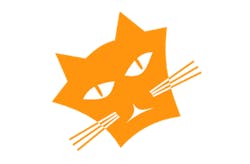If there’s one thing that’s been clear about the Internet of Things thus far it’s this: Once you get beyond the basic understanding of a massive framework comprised of numerous sensors sending data to numerous computers and databases for interaction and analysis, the definition of the Internet of Things (IoT) begins to differ widely. In some instances the definition can be very similar to machine-to-machine (M2M) communications, in others it’s more like business intelligence.
In all cases, however, the way in which data are sent back and forth between different IoT components is often loosely defined … if it’s defined at all.
And there’s the rub. Without defined standards of interoperability the IoT concept remains open to jockeying by suppliers of proprietary protocols, which means that the wide IoT concept we all tend to envision suddenly gets very narrowed into the “Internet of Some Things”.
To remedy this, the HyperCat Consortium has been formed in the U.K. to support the HyperCat specification and continue its development. HyperCat is a hypermedia catalogue format designed forexposing information about IoT assets over the web. Essentially, it allows IoT clients to discover what data an IoT server has available. The specification is built on common Internet standards such as HTTPS, REST/HATEOAS, and JSON.
The ability for clients to discover data on a server they are not familiar with is key to the IoT concept. Lacking a standard specification such as HyperCat, industries tend to develop vertical orientations for client-server interactions rather than the horizontal ones needed by the IoT.
For example, data in a server used for building automation could be organized first by individual customer, then by building, then by area, and finally by data such as temperature. Alternately, in the home automation industry, data on the server could be organized first by users, then by gateway hubs, and then by devices. A client looking to access temperatures across these two systems would not know how to navigate these differing data structures to access temperature data.
Granted, these illustrative examples, pulled from the HyperCat website (and viewable in the video below), are outside the realm of industrial automation. However, it’s easy to see how the same problem could occur across facilities at a global company—or even between different production zones within the four walls of just one manufacturer, considering the multitude of automation systems and accompanying servers that typically reside there (or in the cloud).
The HyperCat consortium was launched this year and I first learned of it at the IHS Industrial Automation Conference in October 2014. In its first year, HyperCat has already received more than $10 million in funding from InnovateUK, the U.K. government’s innovation agency. More than 50 companies and universities have joined the consortium to date, including ARM, BAE Systems, BT, EDF Energy, IBM, Intel, KPMG, Rolls Royce, and the Universities of Birmingham, Bristol, Cambridge, Lancaster and Surrey.
A principal area of concern about HyperCat, however, is security. Despite the significant amount of development work done on the specification thus far, security has not yet been deeply addressed. As CBR noted in its article looking at five potential problems for HyperCat, security is a facet of the specification that remains to be developed.
Considering that security experts now commonly advise building in basic security into any new system from the start, rather than layering it on as an afterthought, this issue with HyperCat is a bit surprising. Of course, some layering of security will always be necessary as new tactics are developed; but relying on the ability to secure a system after-the-fact is not the most viable approach for a specification geared toward interoperability of systems over the Internet.
As Lord Errol was quoted as saying in the CBR article: “If there isn't a lot of security [around HyperCat], it's going to make life more difficult. One of the problems with the Internet, for instance, [is that] it was never built for having security built in.”
To learn more about HyperCat, see the video below. Note: The first half of this 15-minute video gives a very broad explanation of the specification. The second half is more technical and geared toward application developers.
About the Author
David Greenfield, editor in chief
Editor in Chief

Leaders relevant to this article:
